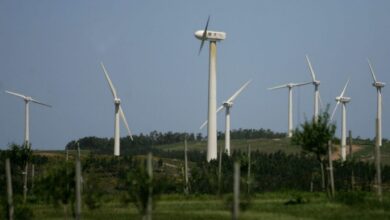4 Tips To Reduce Your Carbon Footprint Through Energy Saving
On World Energy Saving Day we tell you how we can reduce pollution in everyday life .

In their daily lives, people carry out activities that involve the use of natural resources to produce energy. Photo: Pexels
LatinAmerican Post | Brandon Martínez Salazar
Listen to this article
Leer en español: 4 consejos para reducir la huella de carbono a partir del ahorro de energía
On October 21 of each year, World Energy Saving Day is celebrated. This date was born in order for people to reflect and become aware of the importance of saving energy and how this contributes to the environment. Likewise, on this day, the objective is to encourage human beings to adopt responsible habits regarding the consumption and use of resources that are available to everyone.
In their daily lives, people carry out activities that involve the use of natural resources to produce energy. These sources are essentially derived from fossil fuels such as coal and oil, which are not renewable and tend to be limited in the long term. So the excessive use or need of these energy sources have seriously contributed to climate change and, therefore, humanity must look to the future and rethink new ways of generating electricity; which are clean and friendly with the environment.
Also read: 5 ways to save electricity and reduce costs
The goal for 2100 is to reduce greenhouse gas emissions by between 80% and 95% and thus mitigate the impact they have on the entire environment and living beings on planet earth. However, while organizations implement the use of clean energy, each person in the world can contribute their grain of sand to reduce the carbon footprint from changes in their lifestyle.
Avoid short flights
Without a doubt, airplanes are the preferred means of transport since they are the safest and reduce on a large scale the travel time that is made by land. They are considered low-polluting because in a single journey they can transport hundreds of people. However, that is far from being true, because an airplane actually manages to emit 285 grams of CO2 per passenger, making it the most polluting means of transport.
According to the International Air Transport Association (IATA): "Aviation contributes around 2% of the world's carbon emissions."
In this sense, avoiding short flights is an alternative to save energy and reduce CO2 emissions.
Use the car responsibly
The main cause of pollution in cities is due to the large number of cars that are circulating on the streets. These vehicles require high consumption of gas and gasoline that are ultimately harmful to the atmosphere and human health.
Although in our times it is still an indispensable vehicle, there are ways to reduce excess carbon emissions such as:
- Stop the engine if you are going to be parked for a few minutes.
- Constantly check the exhaust pipe and catalyst to prevent leaks.
- Plan short routes to save fuel.
- Do not use the air conditioning when it is not necessary.
- Do not use the vehicle for excessively short destinations.
Use the bicycle more
The bicycle is a means of transport that does not consume energy and does not generate gas emissions. That is why it is recommended to use it at least once a week as a replacement for the car or motorcycle. In addition, it is a way of exercising that brings health benefits.
¿Como sería la forma de integrar más bicicletas a la ciudad y reducir el número de autos?
La contaminación del aire, ruido, falta de árboles son problemas reales a resolver.#MasTransportePublico Masivo Eficiente y Seguro mas Bicicletas!#YoMejorEnBicicleta pic.twitter.com/Upjrqmv6dp— Abeja Bike (@AbejaBike) July 25, 2021
Stop using plastic
Using reusable bags and not buying too many wrapped products at the grocery store also helps reduce your carbon footprint. The overproduction of containers and packaging requires considerable energy expenditure that hurts the planet.




